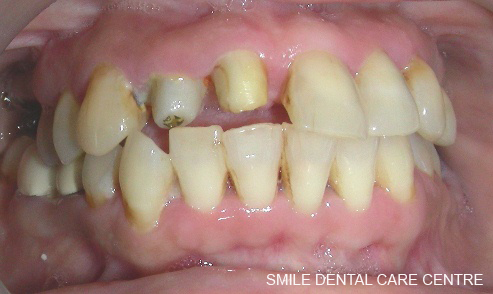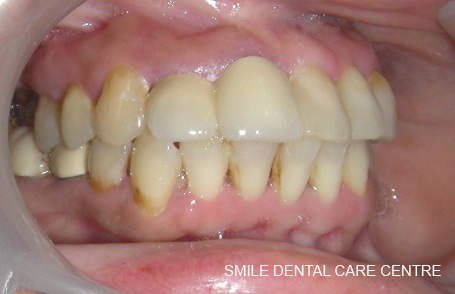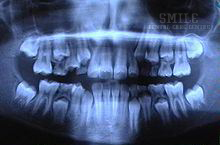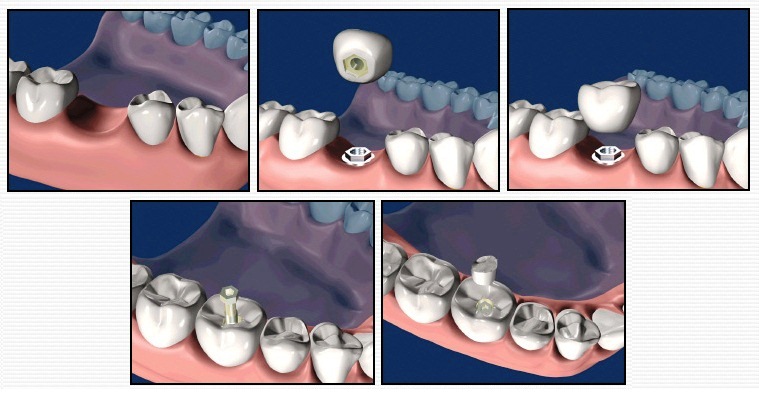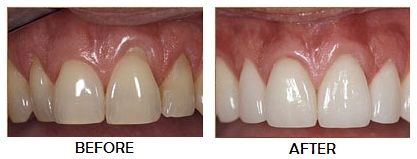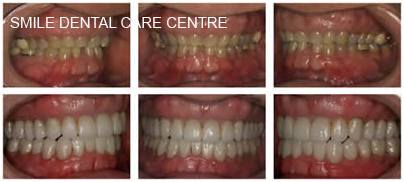We at the clinic function on the concept of offering expertise on the various Facilities in Dental Surgery to
provide the best dental care to its patients.
We specialize in all the simple & modern dental facilities like:
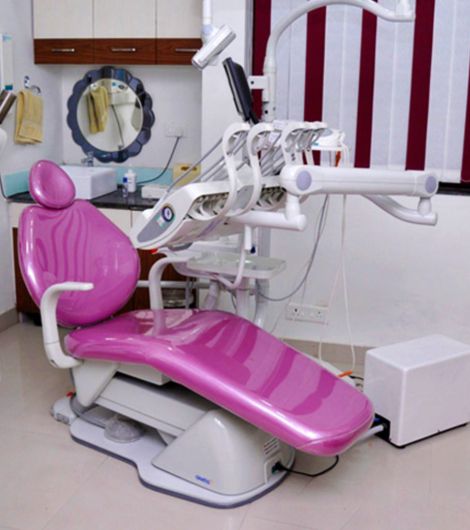
Some State of the Art Facilities available with us are:
An Orthopantomogram (OPG)
An Orthopantomogram (OPT) or Dental Panoramic Radiograph (DPR), also known as a “panorex”, is a Panoramic Scanning Dental X-ray of the Upper and lower jaw.
It shows a two-dimensional view of a half-circle from ear to ear. An OPT relies on tomography i.e. images of specific radiographic planes are taken to make up the larger panoramic image. It provides valuable information about: The position of Wisdom Teeth, Receding Bone levels – which is a sign of Periodontal Disease. It is useful for Implant Surgery, Jaw-Joint problems Sinus problems and Orthodontic Diagnosis.
Orthodontics
Why Orthodontic treatment is required?
Orthodontic treatment is used to correct a malocclusion, involves teeth that are crowded or crooked. In some cases, the upper and lower jaws may not meet properly and although the teeth may appear straight, the individual may have an uneven bite.Protruding, crowded or irregularly spaced teeth and jaw problems may be inherited. Thumb-sucking, losing teeth prematurely and accidents also can lead to these conditions.
Correcting the problem can create a nice-looking smile, but more important, orthodontic treatment results in a healthier mouth. That’s because crooked and crowded teeth make cleaning the mouth difficult, which can lead to tooth decay, gum disease and possibly tooth loss. An improper bite can interfere with chewing and speaking, can cause abnormal wear to tooth enamel, and can lead to problems with the jaws.
What are Braces made from?
Braces (also called Orthodontic Appliances) can be as inconspicuous—or as noticeable—as you like. Brackets—the part of the braces that attach to each tooth—are smaller and can sometimes be attached to the back of the tooth, making the brackets less noticeable.
Brackets may be made of metal, ceramic, plastic or a combination of these materials. Some brackets are clear or tooth-colored. There are brackets shaped like hearts and footballs, and elastics (orthodontic rubber bands) in school colors or holiday hues such as red, white and blue.


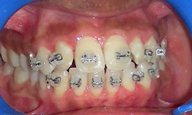


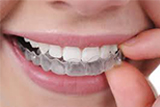
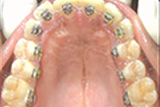

Oral Surgery
Oral Surgery is a recognized international specialty in dentistry. Oral & maxillofacial surgery is the speciality of dentistry that deals with the correction of hard & soft tissues of the maxillofacial region. The spectrum of speciality includes the correction of dentofacial deformities such as cleft lip & palate and craniosynostosis, maxillofacial cystal tumors etc. Dentoalveolar surgery (surgery to remove impacted teeth, difficult tooth extractions, extractions on medically compromised patients, placement of implants. Treatment of soft and hard tissue trauma of the oral and maxillofacial region (jaw fractures, cheek bone fractures, nasal fractures, LeFort fracture, skullbfractures and eye socket fractures , treatment of chronic facial pain disorders.,treatment of temporomandibular joint (TMJ) disorders. Cosmetic surgery limited to the head and neck: (rhytidectomy/facelift, browlift/blepharoplasty, otoplasty, rhinoplasty, septoplasty, cheek augmentation, chin augmentation, genioplasty, neck liposuction, lip enhancement, injectable cosmetic treatments, botox, chemical peel etc.)
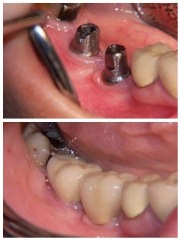
A Dental Implant is a “root” device, usually made of titanium, used in dentistry to support restorations that resemble a tooth or group of teeth to replace missing teeth.
Virtually all dental implants placed today are root-form endosseous implants, i.e., they appear similar to an actual tooth root (and thus possess a “root-form”) and are placed within the bone (endo- being the Greek prefix for “in” and osseous referring to “bone”). The bone of the jaw accepts and osseointegrates with the titanium post. Osseointegration refers to the fusion of the implant surface with the surrounding bone. Dental implants will fuse with bone, however they lack the periodontal ligament, so they will feel slightly different than natural teeth during chewing.
Prior to the advent of root-form endosseous implants, most implants were either blade endosseous implants, in that the shape of the metal piece placed within the bone resembled a flat blade, or subperiosteal implants, in which a framework was constructed to lie upon and was attached with screws to the exposed bone of the jaws.
Dental implants can be used to support a number of dental prostheses, including crowns, implant-supported bridges or dentures. They can also be used as anchorage for orthodontic tooth movement. The use of dental implants permits undirectional tooth movement without reciprocal action.
Paediatric / Children Dentistry


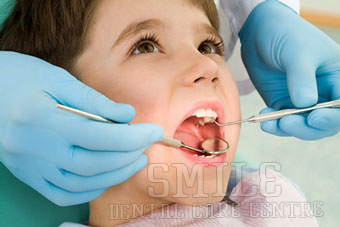
Pediatric Dentistry (formerly pedodontics or paedodontics) is the branch of Dentistry dealing with children from birth through adolescence.
Paediatric / Children Dentistry discipline focuses on pediatric/adolescent growth and development, disease causality and prevention, child psychology and management, and all aspects of the highly-specialized Pediatric restorative techniques and modalities. Some pediatric dentists also specialize in the care of “special needs” patients, such as people with cerebral palsy, mental retardation and autism.
Pediatric dentistry emphasizes the establishment of trust and confidence in children with their dentists. Consequently, one of the main components of pediatric training is child psychology. This manifests itself in special office designs, different communication styles and an emphasis on teaching preventative dental habits to children in an effort to make dental visits enjoyable. A little girl’s trip to the pediatric dentist examining children’s teeth.
Pediatric dentists typically require an extra two to three years of post-doctoral dental training after attaining their dental degree. They are then eligible for board certification in the United States (by the American Board of Pediatric Dentistry, Diplomate ABPD) or fellowship in Canada and Australia/New Zealand (y the Royal College of Dentists of Canada (FRCDC (Paed)) or Royal Australasian College of Dental Surgeons (FRACDS (Paed)), respectively. In the United States and Canada, most states (excluding Texas) and provinces require a specialty permit or license in order to limit professional practice to Pediatric Dentistry or to represent oneself as a pediatric dentist.
Cosmetic Dentistry

Cosmetic Dentistry is generally used to refer to any dental work that improves the appearance. Cosmetic dentistry is generally used to refer to any dental work that improves the appearance (though not necessarily the function) of a person’s teeth, gums and/or bite. Many dentists refer to themselves as “cosmetic dentists” regardless of their specific education, specialty, training, and experience in this field. This has been considered unethical with a predominant objective of marketing to patients. Cosmetic dentistry is generally used to refer to any dental work that improves the appearance (though not necessarily the function) of a person’s teeth, gums and/or bite. Many dentists refer to themselves as “cosmetic dentists” regardless of their specific education, specialty, training, and experience in this field. This has been considered unethical with a predominant objective of marketing to patients.
Cosmetic Dentistry may involve:
1. The addition of a dental material to teeth or gums.
Examples: Bonding, Porcelain Veneers (Laminates), Crowns (Caps), Gum Grafts
2. The removal of tooth structure or gums.
Examples: Enameloplasty, Gingivectomy etc.
3. Neither adding nor removing dental materials, tooth structure or gums.
Examples: Teeth Whitening (Bleaching) etc.
4. Straightening of Teeth accompanied by improvement in appearance of face.
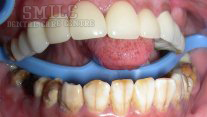
Prosthodontics

Prosthodontics is the dental specialty concerned with Dentures, Dental Implants, Dental and Facial Prosthetics.
Prosthodontics, also known as Dental Prosthetics or Prosthetic Dentistry, is one of nine dental specialties recognized by the American Dental Association, Royal College of Dentists of Canada, and Royal Australasian College of Dental Surgeons.
Prosthodontics is the dental specialty pertaining to the diagnosis, treatment planning, rehabilitation and maintenance of the oral function, comfort, appearance and health of patients with clinical conditions associated with missing or deficient teeth and/or oral and maxillofacial tissues using biocompatible substitutes.
According to the American College of Prosthodontists, a Prosthodontist is a dentist who:
1. Specializes in the Esthetic (Cosmetic) Restoration and Replacement of Teeth.
2. Receives three to four years of additional training after dental school.
3. Restores optimum appearance and function to your smile.
4. The treatment Planning and Restoration of Implants, Temporomandibular Joint Disorder (TMJ) and Rehabilitation of occlusion with prostheses all fall under the field of Prosthodontics.
Periodontics (Gum Treatment)
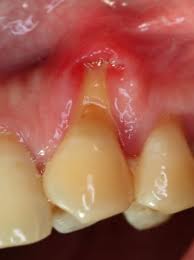
Periodontology or Periodontics is the specialty of dentistry that studies supporting structures of teeth, diseases, and conditions that affect them.
Periodontology or Periodontics (from Greek περί peri “around”; and ὀδούς odous “tooth”, genitive ὀδόντος odontos) is the specialty of dentistry that studies supporting structures of teeth like gums surrounding it and deals with the diseases, and conditions that affect them. The supporting tissues are known as the periodontium, which includes the gingiva (gums), alveolar bone, cementum, and the periodontal ligament. A professional who practises this speciality field of dentistry is known as a Periodontist.
Periodontics take on many different forms but are usually a result of a coalescence of bacterial plaque biofilm accumulation of the red complex bacteria (egs. include P. gingivalis, T. denticola, and A. actinomycetemcomitans) of the gingiva and teeth, combined with host immuno-inflammatory mechanisms and other risk factors which lead to destruction of the supporting bone around natural teeth. Untreated, these diseases lead to alveolar bone loss and tooth loss and, to date, continue to be the leading cause of tooth loss in adults.
Full Mouth Rehabilitation

Full Mouth Rehabilitation involve not only replacement of the lost tooth structure but also restoring the lost vertical dimensions.
Full Mouth Rehabilitation corrects imperfections in bite position and enhances the appearance of the smile. Anyone with short, worn teeth or those that are chipped and broken throughout the mouth would be an excellent candidate. Combining the science of Neuromuscular Dentistry with the artistry of Cosmetic Dentistry, Full Mouth Rehabilitation creates a smile that is functional, comfortable and beautiful.
Neuromuscular Dentistry measures and determines the optimal position of the jaw. Once determined, the jaw position is corrected with the use of an orthotic (a virtually invisible appliance that fits over the top of the lower teeth, gently repositioning the jaw) or the application of dental restorations, including porcelain veneers, crowns or onlays. As an added benefit, the restorations are exceptionally attractive and strong, enhancing the smile beautifully.
Cosmetic Makeovers
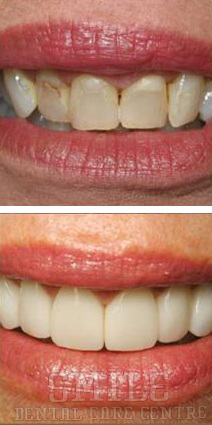
Cosmetic dentistry is the focus on esthetic dental procedures that beautify one’s smile.
Cosmetic Makeover is the process of improving the appearance of a person’s teeth, gums and smile. The procedures that are performed are a blend of science and art that improve the natural appearance of your smile that make you look and feel good.
Cosmetic Makeover procedures differ from general dentistry or restorative dentistry procedures in that they are elected as opposed to required. Cosmetic Makeover has the added dimension of art as well as combining the oral health benefits of general and restorative dentistry to give patients the smile they have dreamed of. A Cosmetic Dentists should be skilled in providing all types of cosmetic and restorative dentistry procedures such as smile makeovers, teeth whitening, orthodontics such as braces or Invisalign, dental implants and bonding, dentures, veneers and more.
The latest advancements in dental technology have allowed cosmetic dentists to utilize materials that are both durable and esthetically pleasing. The amount of additional training cosmetic dentists undergo allows them to blend both art and science into smiles that are healthy and beautiful. Materials such as porcelain or composite materials are closely matched to resemble the look and feel of your original teeth, giving a natural appearance of your teeth and smile that enhance one’s oral appearance.
Cosmetic Makeover has also taken leaps in utilizing less invasive techniques that conserve as much natural tooth as possible. These practices combined with advancements in natural-looking, tooth-colored dental materials make today’s cosmetic dental treatments more durable and predictable than in years past. In addition to these advancements many cosmetic dentists are available to perform many procedures in-office that used to require referrals to other specialists. The need for patients to see multiple dental care providers and experience multiple trips has been replaced by more convenient and advanced procedures and has reduced recovery time.

